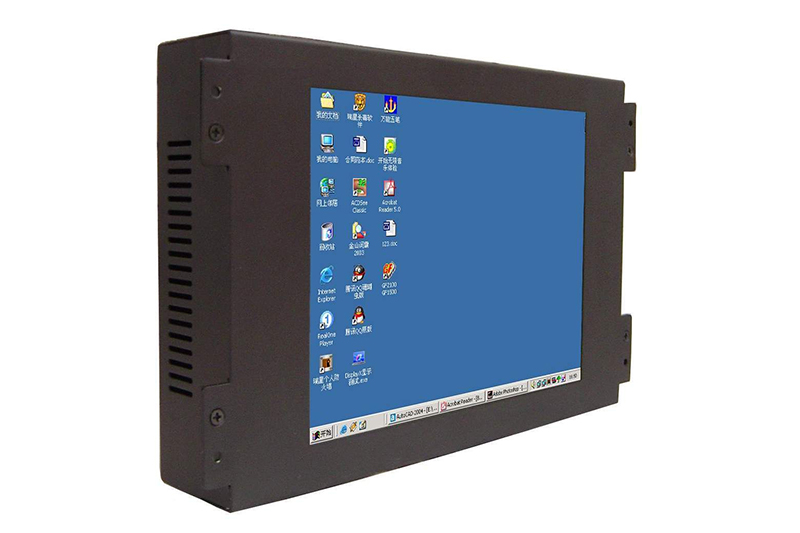Industrial liquid crystal displays are used for industrial liquid crystal displays, with a variety of display sizes, installation methods, etc. Different from ordinary LCD, it can adapt to extreme environment, stable operation, long service life, etc.
visuality
Good visibility is a highlight of industrial LCD. Displays in industrial applications need to support clear and precise visual effects from multiple angles in bright light environments. Most industrial environments are surrounded by bright light, which challenges the visibility of displays.

The brighter the environment, the more difficult the LCD transmission, because people's standard readable brightness in 250 ~ 300cd/㎡. Some LCD manufacturers are trying to extend the range beyond 450cd/ m2. But these displays require more power and are not the best solution. Again, these levels are not sufficient to work in very bright environments.Many domestic manufacturers have done more than 1800cd/㎡ highlighting liquid crystal
In a typical industrial environment, the operator would prefer to view the display at an Angle rather than a positive Angle.
Therefore, it is important to view the image from different angles (up and down, side to side, front to back) with little or no distortion or color change. In particular, the display Settings on consumer apps don't do the job very well, because the image can disappear or not tilt.
Several techniques are used to improve viewing on bevelled LCDS. The viewing angles achieved through some cinema-based techniques are usually 80° up, 60° down, 80° left, and 80° right. These angles are sufficient for many applications, but some may require a larger perspective.
Coplanar conversion (IPS), multi-quadrant vertical alignment (MVA), and ultra-precision thin-film transistor (SFT) technologies provide popular options for LCD manufacturers. These patented technologies enable greater viewing angles than are possible in the field of film technology.
Distinguishability
Size and resolution also play a role in overall readability. Generally, the 6.5, 8.4, 10.4, 12.1, and 15 inch LCDS in LCD mode are used the most in industrial applications. These sizes provide enough space to view digital, signal waveforms, or other graphical data without taking up too much equipment.
The requirement for resolution is mainly determined by the display information or display data. In the past, VGA, SVGA, and XGA resolutions were the most popular.
However, more and more manufacturers are looking at the profitability of large aspect ratio displays such as WVGA and WXGA. Large vertical and horizontal modes allow users to view longer information waveforms and more data on one display. The displays can also be designed to include touch keys on the display surface, allowing users to view data on a large screen, or to switch between standard aspect ratio displays that include touch-screen capabilities. The added advanced features go a long way toward simplifying the user interface.
Sustainability
Temperature change and vibration resistance are important considerations in selecting displays for contemporary industrial applications. The display must be flexible enough to prevent bumping or colliding with mechanical operators or peripherals, and must be able to handle a variety of operating temperatures. LCDS are more resistant to temperature changes, collisions, and vibrations than CRTS.
Storage and operating temperatures are also major variables in selecting displays for industrial equipment. Typically, displays are embedded in airtight containers and are part of larger equipment. In this case, the temperature is affected by the heat generated by the closed container and surrounding equipment.
Therefore, it is very important to keep in mind the actual storage and operating temperature requirements when choosing a display. While some measures are taken to dissipate the heat generated, such as using a fan in a closed container, choosing a display best suited to these environments is the most effective way to ensure that storage and operating temperature requirements are met. Improvements in liquid crystal materials have also made it possible to expand the optimal temperature range for LCD displays. Many LCDS range in temperature from -10C to 70C.
Usability
There are other, less obvious features to consider when choosing a display for manufacturing in a production environment. For example, it is critical to ensure that downtime is minimized. In order to achieve maximum utilization, it is important to choose the highest quality display and have spare parts available for on-site repairs rather than external repairs.
Displays for industrial applications also require a longer product life cycle. When a manufacturer no longer produces a model, the new display should be backward compatible to fit the existing sealed container without the need to redesign the entire system.
Post time: Apr-25-2023



